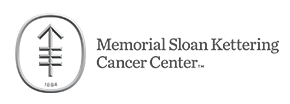Effect of Autologous Blood Patch Injection Versus BioSentry Hydrogel Tract Plug in the Reduction of Pneumothorax Risk Following Lung Biopsy Procedures
| Status: | Active, not recruiting |
|---|---|
| Conditions: | Hospital |
| Therapuetic Areas: | Other |
| Healthy: | No |
| Age Range: | 18 - Any |
| Updated: | 2/14/2019 |
| Start Date: | August 21, 2014 |
| End Date: | August 2020 |
The purpose of this study is to compare two methods that are currently used at the end of a
CT guided lung biopsy to close the hole on the surface of the lung in order to minimize the
chance of air leaking out of the hole. The two techniques consist of either injecting a very
small amount of your the blood called a blood patch into the biopsy hole or injecting a
gel-based FDA approved artificial plug called BioSentry that will eventually get absorbed
into the body.
CT guided lung biopsy to close the hole on the surface of the lung in order to minimize the
chance of air leaking out of the hole. The two techniques consist of either injecting a very
small amount of your the blood called a blood patch into the biopsy hole or injecting a
gel-based FDA approved artificial plug called BioSentry that will eventually get absorbed
into the body.
This study will determine the rate of all pneumothoraces and those pneumothoraces requiring
treatment following percutaneous lung biopsy in patients who have received ABPI or BioSentry
at the end of the biopsy procedure. The data collected will be used to determine if there is
equal effectiveness in the reduction of pneumothorax rates from both interventions.
treatment following percutaneous lung biopsy in patients who have received ABPI or BioSentry
at the end of the biopsy procedure. The data collected will be used to determine if there is
equal effectiveness in the reduction of pneumothorax rates from both interventions.
Inclusion Criteria:
- ≥18 years of age
- Referred for CT guided biopsy of lung lesion
- Target lesion of any size
- Target lesion located 1.5 cm or more away from visceral pleura based on the needle
path
- Skin thickness ≤7 cm (from skin to pleura)
- Needle path without transgression of pleural fissure bleb, or bulla is possible
- Coaxial biopsy technique using Angiotech 19-Gauge introducer needle
- Needle length ≤15
Exclusion Criteria:
- Passage through non-aerated lung or tissue
- More than 1 biopsy on the same side requiring more than 1 pleural puncture
- History of prior ipsilateral lung interventions including:
- Chest tube placement
- Surgery
- Pleurodesis
- Radiation treatment
We found this trial at
2
sites
1275 York Ave
New York, New York 10021
New York, New York 10021
(212) 639-2000

Principal Investigator: Majid Maybody, MD
Phone: 212-639-2793
Memorial Sloan Kettering Cancer Center Memorial Sloan Kettering Cancer Center — the world's oldest and...
Click here to add this to my saved trials
Click here to add this to my saved trials